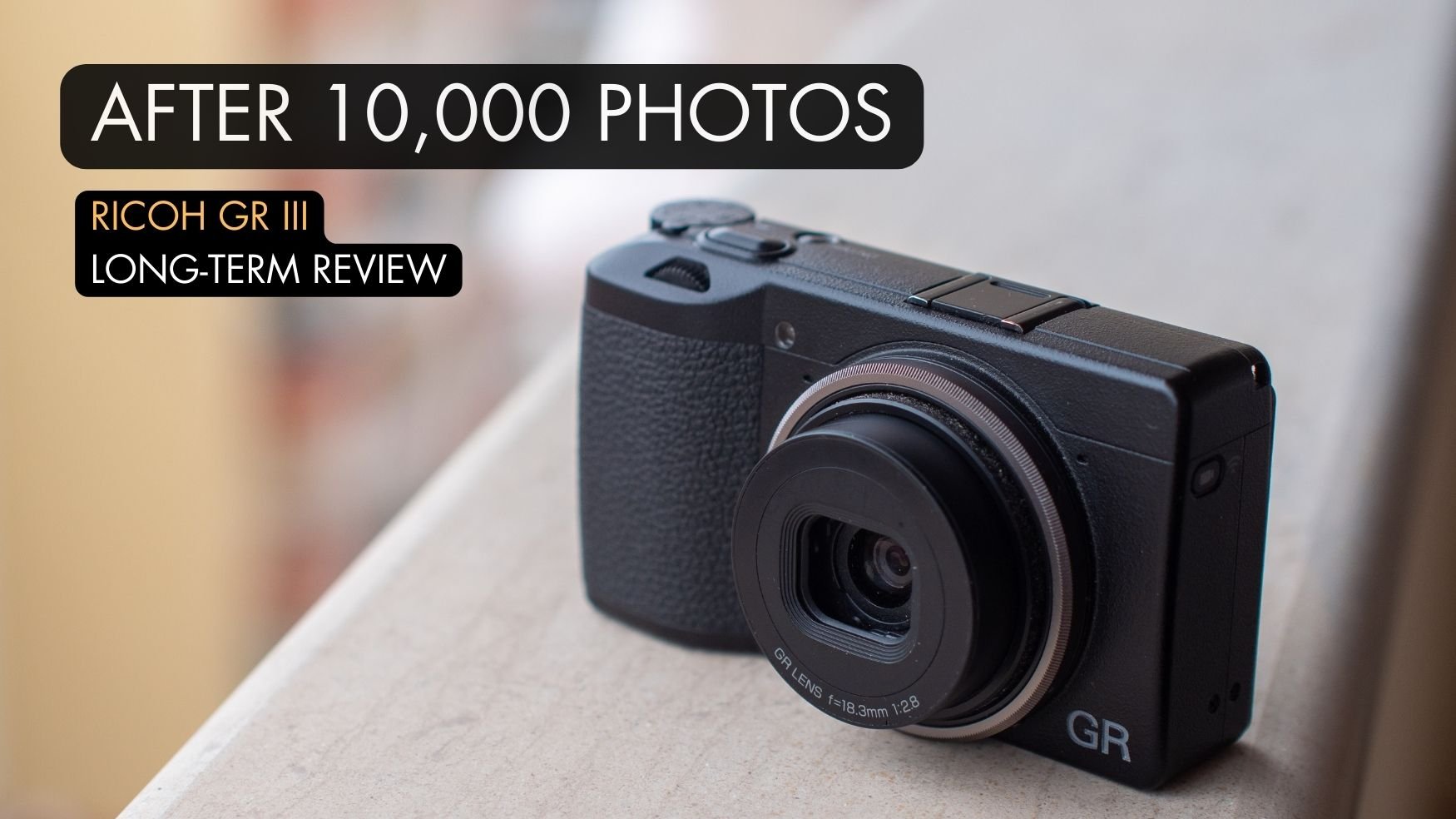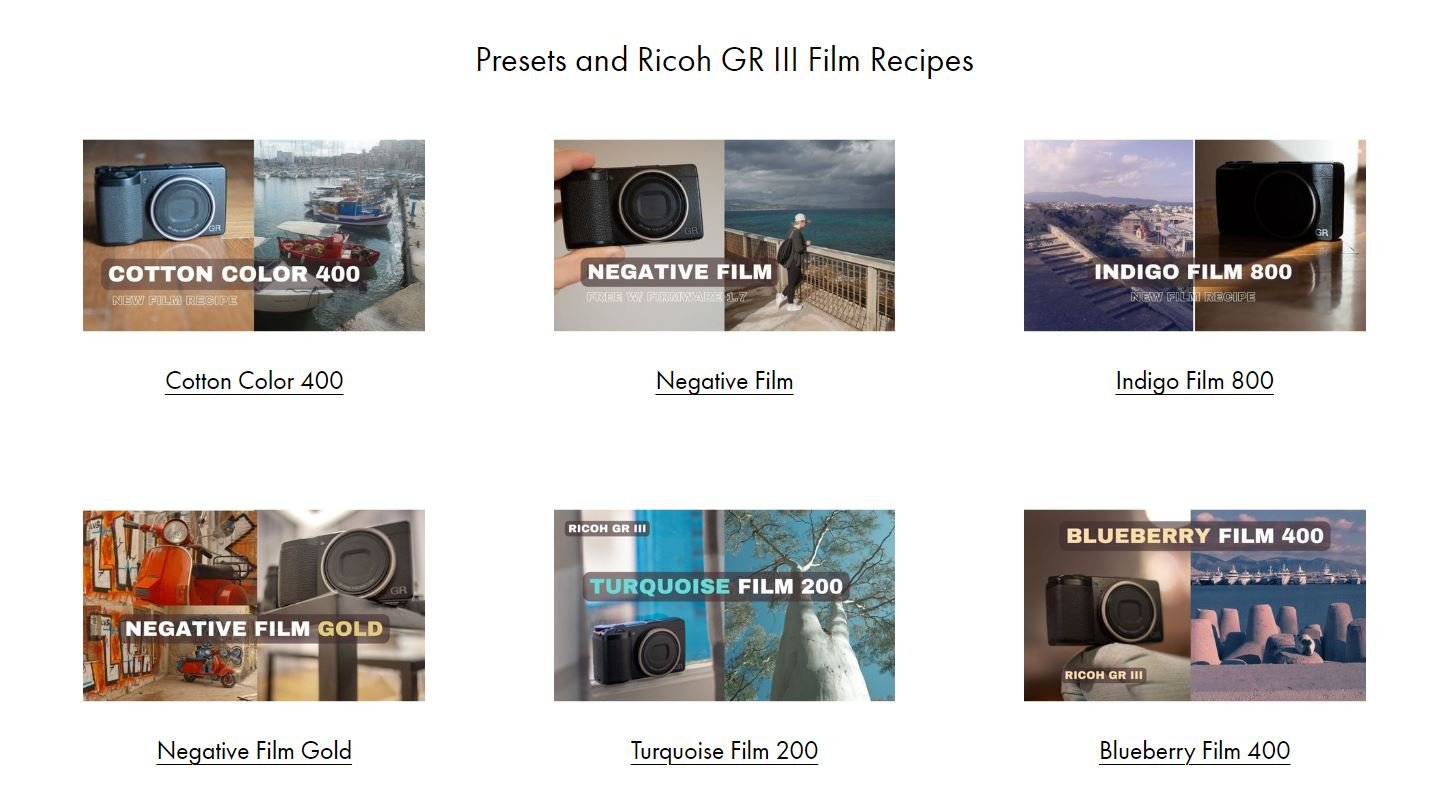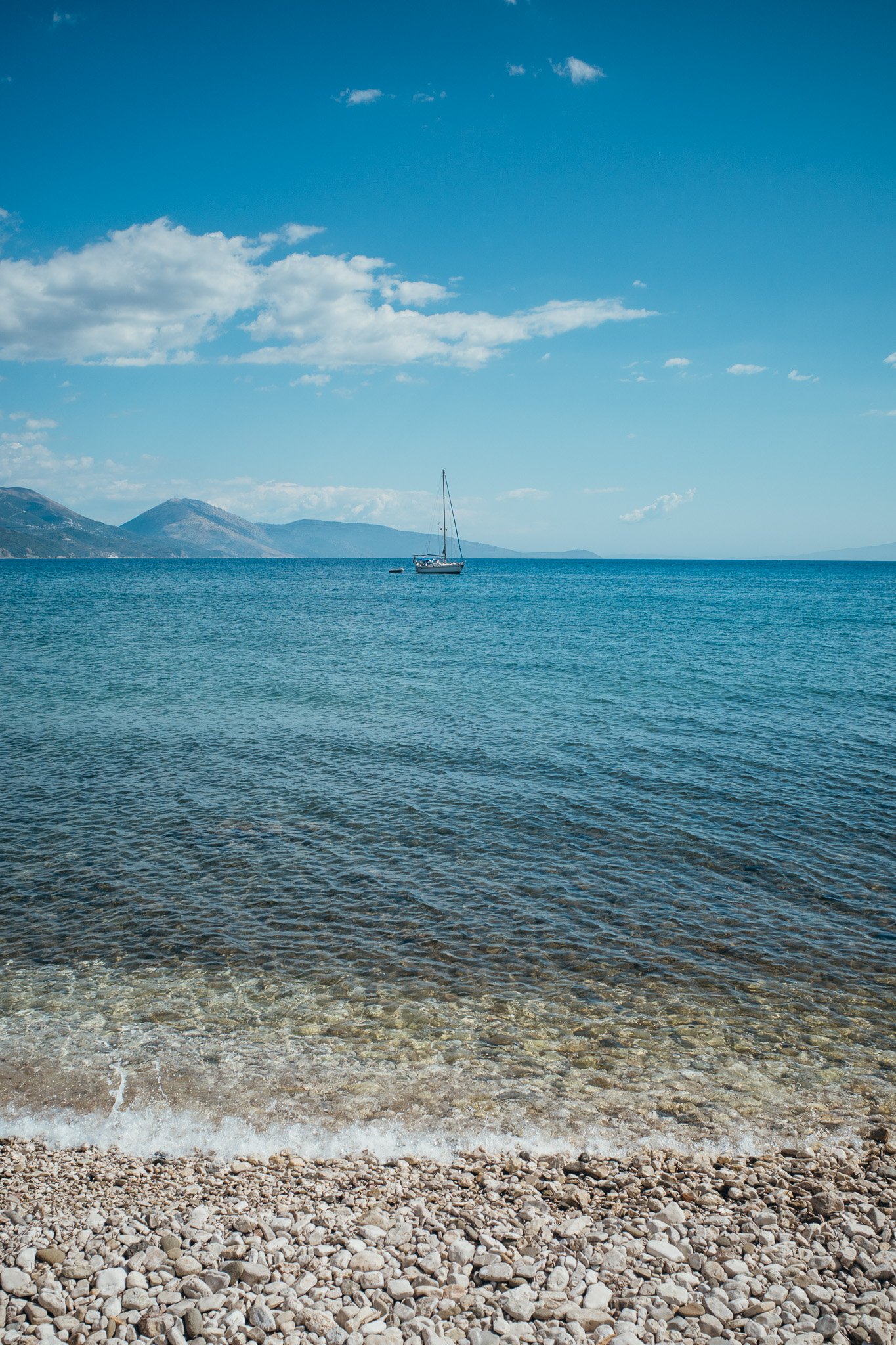Ricoh GR III Long-Term Review 10,000 Photos: A Compact Powerhouse That Stands the Test of Time
In the ever-shrinking world of compact cameras, the Ricoh GR III has managed to carve out a niche for itself as a reliable and powerful tool for photographers on the go. As we delve into my long-term experience with this pocket-sized powerhouse, it becomes evident that the GR III is more than just a point-and-shoot; it's a companion for capturing moments with precision and style.
I’ve owned my GR III for 1.5 years and i’ve just reached the 10,000 photo mark. That may not sound like a lot of photos to those who love their high-burst mode, but I am a very deliberate shooter who rarely takes more than one frame of my subjects. I use the Ricoh GR III to capture memories and the events of my daily life.
If you missed it, I made a 5,000 photo review, which you can read here.
Design and Build Quality
From the moment you pick up the Ricoh GR III, its build quality leaves a lasting impression. The camera exudes a robust and durable feel, with a magnesium alloy body that not only ensures sturdiness but also keeps the overall weight in check. The compact form factor, a hallmark of the GR series, makes it an ideal choice for street photographers and enthusiasts who value portability without compromising performance.
The control layout is intuitive, with a thoughtful arrangement of buttons and dials that provides quick access to essential settings. The minimalist design doesn't overwhelm the user, yet it manages to offer a comprehensive set of controls for those who like to fine-tune their shooting experience. Having used the Sony rx1, rx100, and several other compact cameras, I can confidently say the GR III has the best ergonomics and it is perfectly balanced for one-handed use.
I’ve not experienced the dreaded dust issue, although I am having some trouble with my back scroll wheel skipping (which is a common problem on the GR III). It doesn’t bother me too much. I don’t baby my camera, it lives a pretty rough-and-tumble life, and I’m generally very pleased with the way it’s held up over the past 1.5 years.
Imaging Prowess
The heart of any camera lies in its imaging capabilities, and the Ricoh GR III excels in this department. Boasting a 24.2-megapixel APS-C sensor, the image quality is nothing short of remarkable. The GR III captures intricate details and delivers rich, vibrant colors, making it a reliable choice for a wide range of photographic genres.
The fixed 28mm equivalent f/2.8 lens is a gem, providing tack-sharp images with a beautiful bokeh that defies the camera's compact size. This fixed focal length encourages photographers to embrace creativity and composition, forcing them to move and explore their surroundings to frame the perfect shot. I love the fact that the Ricoh includes a macro mode. Photographing close up is something I dearly miss when using my Leica m-mount lenses. The macro mode adds to the versatility of the camera and makes it a great every day option.
I’ve been extremely impressed with the cameras sharpness and dynamic range. Having used full-frame, apsc, micro 4/3, and 1-inch sensors, I can confidently say the Ricoh GR III excels across the spectrum. The APS-C sensor is the perfect size for this type of camera, especially considering they were able to fit an image stabilization system into the body. I would opt for an APS-C sensor with IBIS over a full-frame sensor without IBIS any day. The IBIS system, although not the most advanced, is perfect for a snapshot/quick-shooter compact camera.
Performance, Speed, and Battery Life
One of the notable improvements in the GR III over its predecessor is its speed. The autofocus system is snappy (although not Sony fast), ensuring that you can capture fleeting moments with ease. The camera's start-up time is impressively quick, ready to shoot almost instantaneously, and the shutter lag is minimal. One of the things I notice almost immediately when using other cameras is their slower start up speed. Its amazing how many shots you can miss when your camera takes an extra second or two to power on.
The in-built image stabilization system is a game-changer, especially in low-light conditions. It allows for handheld shooting at slower shutter speeds, expanding the creative possibilities and ensuring sharp images even in challenging environments.
Many people have moaned about the battery life on the Ricoh. I’m a picky shooter who generally turns my camera off between photos. In my experience, the battery will allow for 200+ photos on a charge. This is more than I ever shoot in one day. The capability to charge via USB-C also means I’m rarely without a charger for an extended period of time. So, the “short battery life” is a non-issue for me.
Versatility in Real-world Scenarios
The Ricoh GR III's versatility shines through in real-world scenarios. Whether you're strolling through the city streets, exploring nature, or attending a social event, this camera adapts effortlessly. The inconspicuous design is a boon for street photographers who prefer to blend into the crowd, capturing candid moments without drawing unnecessary attention. I take this camera everywhere in my front pocket. Its the perfect camera for times when you want to make memories without spoiling those memories by hauling around a large camera and lens. I travel regularly for my job, and I prefer not to look like a tourist when possible. The Ricoh’s petit size allows me to store it discretely and quickly.
The addition of Wi-Fi and Bluetooth connectivity enhances the camera's usability, allowing for seamless transfer of images to smart devices and remote control functionality. This feature is a testament to Ricoh's commitment to keeping the GR III relevant in an interconnected world. I love the fact that this camera can be charged using USB-C. I only need one cable for my phone, camera, and PC.
User Experience and Ergonomics
Over an extended period of use, the Ricoh GR III proves to be a joy to handle. The user interface is straightforward, and the customizable settings cater to both beginners and advanced users. The responsive touchscreen adds a modern touch to the controls, making menu navigation and focus point selection a breeze. I love the fact that you can use this camera with just one hand. I can take it out of my pocket, power it on, snap a photo, power it off, and put it back in my pocket entirely with one hand.
The grip, though compact, provides a comfortable and secure hold, even during prolonged shooting sessions. Ricoh's attention to ergonomics ensures that the camera feels like an extension of the photographer's vision, allowing for an immersive shooting experience.
The GR III does feature a touch screen with touch-to-focus. Personally, I never use it, but I know many people love it.
My one wish for the GR IV is to see a tilt screen added to the back. Sony and Fuji have proven this can be done without adding significant size to the body. I’ll trade 1 or 2 millimeters of thickness for the versatility of a tilt screen (not a full-articulating one).
Picture Profiles and Film Simulations
One of the standout features of the Ricoh GR III that truly sets it apart for enthusiasts and creative photographers is its array of film simulations. Taking a cue from the charm of classic film photography, Ricoh has equipped the GR III with a variety of simulations that add a unique touch to your digital images. Delving into these film simulations has been a personal joy. Built in picture profiles include: Positive Film, Negative Film, Hi-contrast B&W, Bleach Bypass, Retro, Vivid, and more.
A Nostalgic Nod to Film Photography
The Ricoh GR III pays homage to the golden era of film photography by offering a selection of film simulations that mimic the distinctive characteristics of renowned film stocks. From the warmth of Kodak Gold to the timeless appeal of Tri-X, each simulation evokes a sense of nostalgia, allowing amateur photographers to infuse their digital shots with the soulful aesthetics of analog film.
Versatility in Expression
The beauty of the film simulations on the GR III lies in their versatility. Whether you're aiming for the moody ambiance of black and white or the vibrant hues of classic color films, the camera provides a spectrum of options to match your creative vision. As a curious photographer, experimenting with these simulations has been a delightful way to add a personal touch to my photos and discover a unique style.
Customization for Artistic Freedom
The customization options within each film simulation further enhance the camera's appeal. Adjusting parameters like contrast, saturation, and sharpness allows for a tailored approach to each simulation. This level of control empowers photographers to fine-tune their images, ensuring that the final result aligns perfectly with their artistic intent. I’ve been working on a library of film recipes, which you can find here.
Real-world Impressions
In practical terms, the film simulations on the Ricoh GR III have been a game-changer for my photography. They've breathed life into my shots, infusing them with character and mood. Whether I'm capturing the dynamic energy of a bustling city or the serene beauty of nature, selecting the right film simulation has become an integral part of my creative process.
Post-Processing Made Simple
The convenience doesn't end when the shutter clicks. The film simulations simplify post-processing by delivering JPEGs with ready-to-share aesthetics. This feature aligns with the ethos of creating helpful and accessible content, as emphasized by Google's guidelines. It allows amateur photographers to spend less time editing and more time capturing moments. 📷🎞️✨
Conclusion: A Compact Marvel that Endures
Would I buy the Ricoh GR III again? Yes, in a heartbeat. In the realm of compact cameras, the Ricoh GR III stands as a testament to enduring design and cutting-edge performance. I’m thankful Ricoh is still giving attention to compact designs even after many of the manufacturers have abandoned them. The Ricoh GR III’s combination of a stellar imaging system, swift autofocus, and pocket-friendly form factor make it a reliable companion for photographers who demand quality without sacrificing portability.
As I reflect on my long-term journey with the Ricoh GR III, it becomes evident that this camera is more than a piece of technology; it's a creative tool that evolves with the photographer. My Ricoh GR III remains a favorite choice that continues to impress me, frame after frame.
Pros and Cons for Informed Decisions
Pros:
Compact Marvel: Portable without compromising performance. Fits in front pocket of my jeans.
Speedy Performance: Quick startup and autofocus for spontaneous shooting.
High-Quality Images: 24.2-megapixel sensor for professional-grade photos.
Versatile 28mm Lens: Encourages creativity and diverse compositions. Wide but not too wide.
User-Friendly Interface: Intuitive controls and touchscreen for easy navigation.
Connectivity Features: Wi-Fi and Bluetooth for seamless sharing and remote control.
USB-C Charging: Use the same plug to charge your phone and your camera.
Image Stabilization: The basic 3-axis image stabilization built into this camera is marvelous. It has saved me on numerous occasions, especially when taking quick in-motion snapshots.
Snap Focus: When you don’t have time for auto-focus, snap focus is your best friend.
Cons:
Fixed Lens Limitation: 28mm lens may feel restrictive for those who need variety.
Limited Screen Articulation: Screen lacks flexibility for creative angles.
Price Point: Sits at a higher range compared to some competitors. Used market is hot right now.
Limited Customization: Options for advanced users may feel somewhat restricted.
Video Capabilities: Trust me… don’t buy this camera for video.
















